| Umělec magazine 2001/1 >> Fearful Symmetry | List of all editions. | ||||||||||||
|
|||||||||||||
Fearful SymmetryUmělec magazine 2001/101.01.2001 Jeffrey Bartel | comics | en cs |
|||||||||||||
|
"“...and there was this toy, this snowstorm ball ... It was like a little glass bubble of somewhere else.”
I’m in the basement of a friend’s house, we’re watching a movie. High school era: I’m fifteen and everything that goes along with it. And one of his older brother’s friends comes down, stands on the steps, watches the movie for a bit. It’s about a world where animated characters are real, and interact with humans. There’s been a murder, a toon killed a human, and the plot chugs merrily along on the strength of the whodunnit, but mostly it’s about how cartoon characters act, and how they’d react to the actual world. “This movie’s so stupid,” says older brother’s friend. “You know that shit isn’t real.” Jack the Ripper was recently in Prague. He stalked and savagely killed five women. Police investigated, gathered evidence, failed to prevent the violence. The police were led by Johnny Depp. Point the glass eye of a movie camera in the right direction, place the correct objects in front of it, and you can create anything. These cameras were creating the world of Victorian London for the upcoming movie, From Hell, based on a graphic novel illustrated by Eddie Campbell, and written by Alan Moore. A pool of blood on a city street. Small glass worlds. A New Era Fifteen years ago, three small glass worlds promised a new era for comics: Maus, The Dark Knight Returns, and Watchmen. All three received wide national and critical attention. All three, in unique ways, set a new standard for the potential of comics. Maus is the true story of writer/artist Art Spiegelman’s relationship with his father, of his father’s experiences as a Jew in Germany during the Holocaust. The power of Maus comes from the clarity of its storytelling — and from the device of depicting Nazis as cats, Jews as mice. By that simple act, Spiegelman created a tension and complexity in his narrative that could only have been accomplished through comics. It also started a surge of autobiographical comics of various levels of merit. The Dark Knight Returns, by Frank Miller: The title really says it all. Ever since the popular TV show in the 1960s starring Adam West, the character of Batman had been popularly regarded as a cheesy joke, and a pretty funny one at that. The Dark Knight Returns presented a vision of Batman as a ruthless warrior in a hopelessly corrupt and violent world. Very quickly, every superhero on the stands became a ruthless warrior in a hopelessly corrupt and violent world. And then there’s Watchmen. Blood on a smiley face. A watch with hands moving towards midnight. It’s about a world where superheroes are real. There’s been a murder, a superhero has been killed, and the plot does chug along on the strength of the whodunnit, but mostly it’s about heroes, and how a man with the powers of a god would change the world. You can read it as a mystery, as a superhero comic to end superhero comics, as a postmodern take on the act of putting on a mask to fight crime. 2001 marks Watchmen’s fifteenth anniversary. DC Comics planned recognition of this. There was to be a new edition of Watchmen, with previously unseen artwork as well as new commentary by Alan Moore. There were to be action figures. That particular anniversary party got cancelled, victim of a disagreement between Alan Moore and DC Comics. In lieu of toys and preliminary character sketches, the celebration of Watchmen’s anniversary will have to take on a more introspective tone. Consider Watchmen: Why is it one of the most important works in comics? What differentiates it from a thousand stories of men in colorful costumes beating each other up? Fifteen years after its publication, the legacy of Watchmen remains elusive. Of course it popularized the graphic novel format, of course it started a trend of deconstructing the genre conventions of superheroes. It introduced sex and violence to the comics world on a mainstream level, but while many were quick to jump on that bloody bandwagon, few did so with much more intent than shock and titillation. What makes Watchmen unique, to this day, is its structural complexity. A friend of mine told me he had seen the script for Watchmen. “There was about a page of description for each panel.” Each panel. A pool of blood on a city street. Watches ticking towards midnight. Double Mirror Writer Alan Moore and artist Dave Gibbons created an intricate glass world in Watchmen, perfectly self-contained. If superheroes were real, how would the average person regard them? How would a being of Dr. Manhattan’s power affect the daily aspects of life: transportation, food, even cigarettes? Why does there seem to be a mounting dread of nuclear war? The answers are there, explicitly or obliquely: in conversations, in the magazine articles and book chapters that make up the last four pages of each issue, in the half seen newspaper headlines, and graffiti messages on alley walls. It’s a meticulously built world, where the present is a double mirror simultaneously reflecting the past and future, where images take on a variety of guises and meanings, where a rorschach blot can contain the horror of the void. Much of the power of Watchmen comes from this commitment to images. For each of its twelve issues, the image on the cover expresses the issue’s dominating theme. In Chapter I, it’s the bloodstained smiley face button, emblem of the murdered Edward Blake, aka the Comedian. The narrative insistently circles around the image, beginning and ending with a slow tracking shot away from its visage. In Chapter II, the stone angel in the graveyard for Blake’s funeral, as the characters reflect on Blake’s life. But these re-occurring images go beyond establishing the theme of individual chapters. The splattered face appears in a radar screen, in the dial of a remote control, in a freshly carved pumpkin — images appear again and again, with each new appearance lending a deeper shade of meaning. The smiley face, the glass sphere, the radiation symbol, the skull-and-crossbones — once you begin to notice them, they become omnipresent. Each subsequent reading brings more to the surface. One of the most startling examples of the dedication to motifs can be found in Chapter V, “Fearful Symmetry,” the theme being reflections, and, well, symmetry. While symmetrical designs and reflections appear often (the shapes in Rorschach’s mask, and one scene takes place primarily in the reflection of a mirror), the format of the issue itself contains symmetry: the first and last page of the issue reflect each other, in design and theme, as do the second page and second-to-last, reflecting on and on until they meet in the middle. It gets almost frightening, after a while — the way these images and motifs predominate. When during one reading I noticed the pirate ship that the Comedian had in the bookshelf of his apartment, I felt like screaming. Rorschach’s Journal, October 12th, 1985: “Dog carcass in alley this morning, tire tread on burst stomach. This city is afraid of me. I have seen its true face.” “The streets are extended gutters and the gutters are full of blood and when the drains all finally scab over, all vermin will drown.” “The accumulated filth of all their sex and murder will foam up about their waists and all the whores and politicians will look up and shout ‘Save us!’ . . . ” “And I’ll look down and whisper ‘no’.” Word and Image But of course to divorce the words of Watchmen from its artwork is to miss the point entirely. Unlike any comic before or since, Watchmen derives its power from the relationship between words and images in a comics panel. “True face” contrasted against the smiley face with blood on it, the overall apocalyptic tone of the captions contrasted to the man carrying the sign “The End Is Near” walking through the pool of blood. While other comics had played with the word/image relationship, few had done so as insistently, and none as innovatively. The technique gets used ironically, for humorous effect, to underscore the emotion of a scene — but always in service of the story. To illustrate, consider the pirate comic within Watchmen, called “Marooned.” At first, its sole purpose for existence seems to be as ironic commentary to the larger story — but nothing in Watchmen is ever that simple. Max Shea, the missing writer of “Marooned”; certain lines from the comic (“How had I reached this appalling position, with love, only love, as my guide?”); the parallels between the sailor in “Marooned” and Ozymandias: all are essential to understanding the conclusion of Watchmen. Using a seemingly unrelated caption to comment on the depicted scene is one of the innovations Watchmen popularized for the comics world, but it’s interesting to note that Moore himself largely abandoned the practice after Watchmen. From Hell, the Jack the Ripper graphic novel that would be his most ambitious completed work after Watchmen, discards the practice completely. It’s as if Moore had sensed a trap within the technique (the danger of style distracting from story, perhaps), and instinctively left it behind. Flashy or not, the technique is capable of great power, as in this word/image relationship moment: the magazine seller saying, “You never know what’s bearing down on you,” with the man carrying a sign saying “The End is Nigh” behind him, and the Institute of Extraspacial Studies in front of him. Horrifying irony. Another of Watchmen’s contributions: a conclusion that actually completely ends the story. The characters in Watchmen began as an attempt to revamp the Charlton Comics line (which starred characters such as Blue Beetle and the Question) but quickly took on their own identities (Nite Owl and Rorschach) when DC realized that the characters would be unusable afterwards: Most of the characters end up dead, for one thing. There will be no sequels to Watchmen, no spin-offs, no continuing series. In a world where a majority of movies have a roman numeral after the name, and cultural significance is defined by cross-market success, Watchmen seems almost defiantly singular. This is especially remarkable in the world of comics. DC has been publishing stories about Superman and Batman for over sixty years. It’s impossible and undesirable to know the full story of Superman, as presented in the countless comics he’s appeared in since his first appearance in 1939: Action Comics, The Adventures of Superman, etc. While continuous storytelling can produce works of worth, there is a certain extent beyond which the characters aren’t allowed to change. Batman can never move beyond the motivation of avenging his parents’ murder. Archie can never choose between Betty and Veronica. The ability to create an enclosed world in comics, presented in a finite number of issues, where characters can change dramatically, is something Watchmen didn’t invent, but did pioneer. Its popularity made the graphic novel a viable option for bookstores, and graphic novels allowed comic creators to present a complete story to a non comic-bookshop public. Sandman, debatably the most important comic work after Watchmen, and heavily influenced by Moore’s writings, is a complete story told in 75 issues, one annual, and a couple of odds and ends: all neatly collected in ten graphic novels and easily available in bookstores, shelved usually a few titles away from Watchmen. The Return of Superheroes In the wake of Watchmen and The Dark Knight Returns, for several years the worlds superheroes lived in were more violent, and the heroes responded in kind, by being grim, serious, and psychotic. Alan Moore had a falling out with DC Comics, over issues of creative control and censorship. He abandoned the superhero genre, focusing on more personal projects with smaller independent publishers. Some of these projects, notably Small Numbers, crashed and died spectacular deaths. He concentrated his efforts on recreating the world and actions of Jack the Ripper in the graphic novel From Hell, with a clinical obsession for backing up his depictions and theories, the process laid out for the reader in pages of detailed footnotes. But slowly he came back to superheroes: for money, in some cases (practically anything he ever did for Image springs to mind), but also because he couldn’t seem to leave the superhero genre alone. This time though, his approach was that of reconstruction. In the 1963 series, he paid homage to the playfulness of Marvel comics of the 1960s. He took over the comic Supreme, and turned it into a celebration of the ideals Superman represents. Last year, he launched several comics simultaneously, under the imprint America’s Best Comics (ABC): Tom Strong, Top Ten, Promethea, Tomorrow Stories, The League of Extraordinary Gentlemen. In these series, he continues to play with conventions, but this time, while the heroes may be human and fallible, there isn’t a character approaching Rorschach for sheer moral ambivalence. The good guys don’t wear white hats, but they could. The ABC line is owned by Wildstorm Comics, and Wildstorm was recently bought out by DC. Indirectly, this had Moore once again working for the company he’d walked away from. While there have been many positive changes in mainstream comics, certain tensions remained. DC refused to publish one of the stories for Tomorrow Stories, for reasons undisclosed, but guessable. The story in question starred a female character called Cobweb, and her previous stories contain strong sexual undercurrents. Presumably, the current got too strong for DC’s tastes. Moore responded by shutting down the idea of the Watchmen anniversary, and DC has respected his wishes. As in Watchmen, the past repeats itself: as in Watchmen, the action-figure line gets closed down. Stronger World Presumably, older brothers and their friends, so critical of a world where animated characters are real, would be no more forgiving of the world of Watchmen. People dressing up in colorful costumes and fighting evil, a blue-skinned human with god-like powers: “You know that shit isn’t real.” And of course it isn’t; but from the opening panel of the smiley face in a pool of blood, and for twelve chapters, as Rorschach searches without compromise for the killer of the Comedian, as the retired Nite Owl slowly returns to his abandoned life as a hero, as Dr. Manhattan observes all moments of his life, past and future, with an inhuman detachment, as a man reaches an appalling condition with only love as his guide ... and as we the readers are left with the image of a smiley face on a T-shirt, stained with ketchup, and the line by John Cale, “It would be a stronger world, a stronger loving world, to die in,” we’re in a small glass world whose repeating patterns reflect into ours. "
01.01.2001
Recommended articles
|
|||||||||||||
|
04.02.2020 10:17
Letošní 50. ročník Art Basel přilákal celkem 93 000 návštěvníků a sběratelů z 80 zemí světa. 290 prémiových galerií představilo umělecká díla od počátku 20. století až po současnost. Hlavní sektor přehlídky, tradičně v prvním patře výstavního prostoru, představil 232 předních galerií z celého světa nabízející umění nejvyšší kvality. Veletrh ukázal vzestupný trend prodeje prostřednictvím galerií jak soukromým sbírkám, tak i institucím. Kromě hlavního veletrhu stály za návštěvu i ty přidružené: Volta, Liste a Photo Basel, k tomu doprovodné programy a výstavy v místních institucích, které kvalitou daleko přesahují hranice města tj. Kunsthalle Basel, Kunstmuseum, Tinguely muzeum nebo Fondation Beyeler.
|







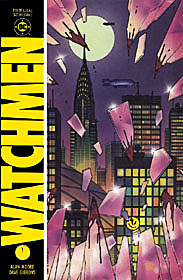
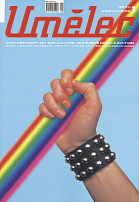






















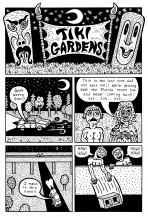
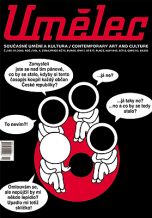
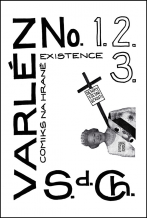
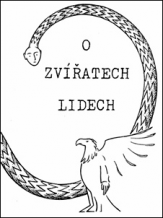


 We Are Rising National Gallery For You! Go to Kyjov by Krásná Lípa no.37.
We Are Rising National Gallery For You! Go to Kyjov by Krásná Lípa no.37.
Comments
There are currently no comments.Add new comment